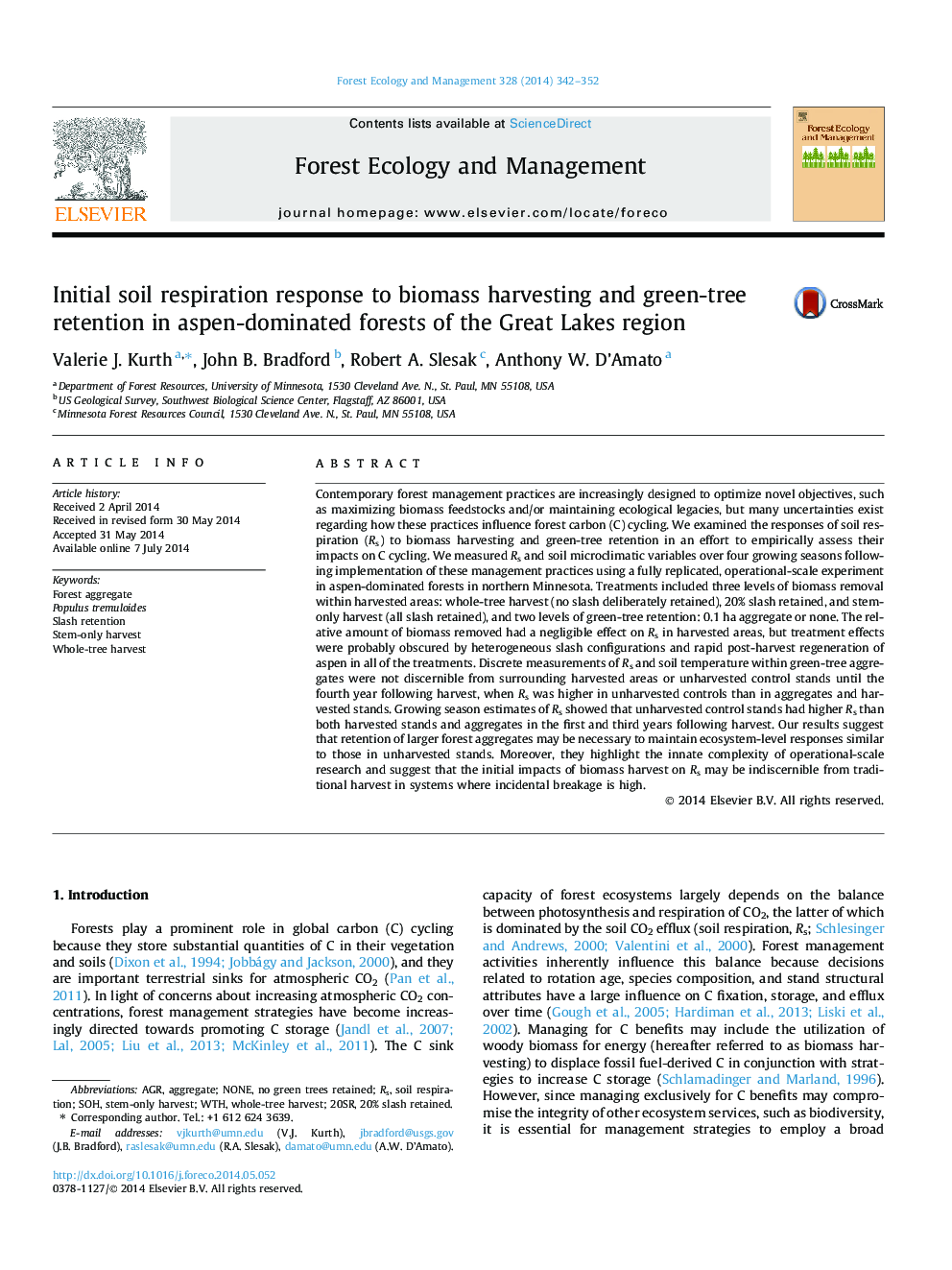| Article ID | Journal | Published Year | Pages | File Type |
|---|---|---|---|---|
| 86534 | Forest Ecology and Management | 2014 | 11 Pages |
•We measured soil respiration responses to biomass removal and green-tree retention.•Soil respiration did not differ among levels of biomass removal.•Responses inside forest aggregates were intermediate to harvest and control stands.•Retained forest aggregates may need to be larger to maintain ecosystem properties.
Contemporary forest management practices are increasingly designed to optimize novel objectives, such as maximizing biomass feedstocks and/or maintaining ecological legacies, but many uncertainties exist regarding how these practices influence forest carbon (C) cycling. We examined the responses of soil respiration (Rs) to biomass harvesting and green-tree retention in an effort to empirically assess their impacts on C cycling. We measured Rs and soil microclimatic variables over four growing seasons following implementation of these management practices using a fully replicated, operational-scale experiment in aspen-dominated forests in northern Minnesota. Treatments included three levels of biomass removal within harvested areas: whole-tree harvest (no slash deliberately retained), 20% slash retained, and stem-only harvest (all slash retained), and two levels of green-tree retention: 0.1 ha aggregate or none. The relative amount of biomass removed had a negligible effect on Rs in harvested areas, but treatment effects were probably obscured by heterogeneous slash configurations and rapid post-harvest regeneration of aspen in all of the treatments. Discrete measurements of Rs and soil temperature within green-tree aggregates were not discernible from surrounding harvested areas or unharvested control stands until the fourth year following harvest, when Rs was higher in unharvested controls than in aggregates and harvested stands. Growing season estimates of Rs showed that unharvested control stands had higher Rs than both harvested stands and aggregates in the first and third years following harvest. Our results suggest that retention of larger forest aggregates may be necessary to maintain ecosystem-level responses similar to those in unharvested stands. Moreover, they highlight the innate complexity of operational-scale research and suggest that the initial impacts of biomass harvest on Rs may be indiscernible from traditional harvest in systems where incidental breakage is high.
